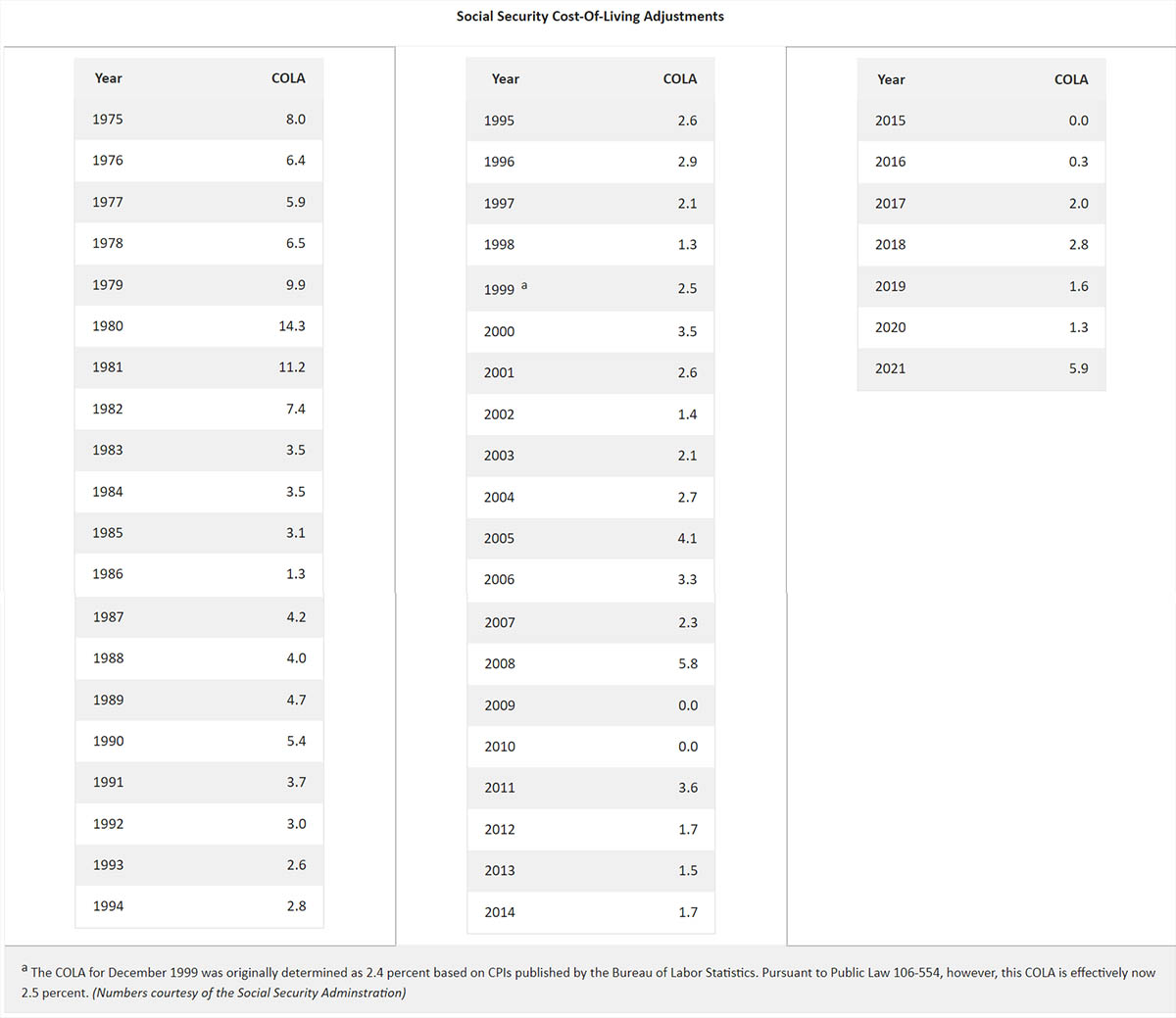Is 2022 the start of big time inflation?
The good news is that federal, postal, military and Social Security retirees in January will be getting the largest cost of living adjustment they’ve had in...
The good news is that federal, postal, military and Social Security retirees in January will be getting the largest cost of living adjustment they’ve had in years. That is also the bad news! Especially for most working feds who are under the Federal Employees Retirement System (FERS) program with its diet cost-of-living-adjustment (COLA) feature. When inflation exceeds a certain amount, FERS retirees get it, minus one percentage point. That is not so bad IF it is a rare thing. But if inflation returns to bad-old-days levels, it could quickly erode the buying power of FERS retirees. How bad is that over time?
Well if you’ve picked up the habit of eating every day, if you wear clothes in public or if you get around by trains, planes or automobiles, you’ve probably noticed prices are going up. Up for everything from basic to luxury items. Whether the big jump in prices is because of climate change, supply chain problems, lack of workers or other things, it matters a great deal to politicians, journalists and people in academia. You just want to know why after years of 2-to-3% per year inflation, the cost of living adjustment jumped in the last 12 months. The biggest increase since 1990.
People who get Social Security, retired military pay or a federal Civil Service Retirement System (CSRS) annuity are in good shape. At least compared to private sector workers whose pensions were frozen when they retired. Or they don’t have a pension, period.
The January cost of living adjustmnent for most retired feds, military and Social Security reciepents will be 5.9%. While that won’t exactly cover rising costs for everything, it will go a long way to help the seniors keep pace. But the keyword is “most.” Most current retirees are under the old CSRS system, which promises to keep up with inflation as measured by the Consumer Price Index.
So far so good. But…
Almost all current federal workers, plus a growing number of new retirees, are under the FERS program. There is a permanent battle between FERS (with its generous 5% employer match to the TSP and Social Security coverage) and CSRS retirees who start off with much higher annuities (which they help finance) than FERS retirees. The fly in the ointment for FERS employees is their diet-COLA system. Under it, FERS retirees get the same COLA as CSRS retirees UNTIL it exceeds 2%. So for example if a CSRS Social Security COLA is 6%, FERS retirees would get 5%.
Imagine the impact on a FERS annuity over a period of extended inflation
What if, as some experts project, we are entering a period of high inflation? One that lasts for years. It’s happened before. Some say it may already be happening again. Benefits expert Tammy Flanagan (Tammy@retirefederal.com) passed on a chart showing the history of cost of living adjustments since 1975. If you are under the FERS diet-COLA plan, it can be scary. The chart was prepared by the Congressional Research Service. It reflects the actual COLA that Social Security and CSRS retirees got.
Prior to 1975, Social Security benefit increases were set by legislation.
Nearly Useless Factoid
By Alazar Moges
The reason cats rub their heads against things is because they have scent glands in their cheeks, forehead and chins. Rubbing up against people, other cats and objects is a form of marking their enviroment and grouping it together with the same scent.
Source: PetMD
Copyright © 2025 Federal News Network. All rights reserved. This website is not intended for users located within the European Economic Area.
Mike Causey is senior correspondent for Federal News Network and writes his daily Federal Report column on federal employees’ pay, benefits and retirement.
Follow @mcauseyWFED






